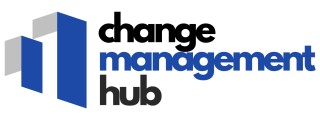
Defining Sourcing and Procurement
Clarifying Sourcing and Procurement
Understanding the differences between sourcing and procurement is fundamental for any organization aiming to optimize its supply chain. While these terms are often used interchangeably, they represent distinct processes within the business landscape. Sourcing is a critical step that focuses on identifying and evaluating potential suppliers who can provide the goods and services an organization needs. It involves strategic decisions based on an analysis of suppliers' capabilities, costs, and risks. Strategic sourcing aims to build long-term supplier relationships that enhance the organization's supply chain performance. The core objective is not just cost reduction but also improving overall supply chain efficiency. Procurement, on the other hand, encompasses the broader process of acquiring goods and services, from issuing purchase orders to managing supplier performance and relationships. It plays a vital role in achieving effective chain management by ensuring that the required goods are purchased at the right price, from the right source, and delivered on time. Procurement can include direct and indirect spend, each requiring different strategies and management techniques. As these processes evolve, integrating sourcing and procurement becomes challenging yet essential for businesses. In the context of change management, these processes must be adaptable to shift seamlessly alongside organizational changes. This integration is explored further in the article. For a deeper dive into how organizations can achieve new heights in managing these changes, you can explore this insightful resource that discusses innovative strategies in change management."The Role of Sourcing in Change Management
The Strategic Role of Sourcing in Organizational Change
Sourcing plays a pivotal role in change management, especially when an organization is navigating through transitions. It involves identifying and evaluating potential suppliers and establishing strategic supplier relationships that can support the organization’s evolving needs. This process is not just about acquiring goods and services; it’s about aligning these acquisitions with the long-term goals of the business.
In the context of change management, sourcing is crucial for several reasons:
- Strategic Alignment: Sourcing ensures that the procurement of goods and services aligns with the organization’s strategic objectives. This alignment is essential when changes in the business environment require a shift in strategy.
- Cost Management: Effective sourcing can help manage costs by identifying suppliers that offer the best value. This is particularly important during periods of change when budgets may be tight.
- Risk Mitigation: By carefully selecting suppliers and managing supplier performance, sourcing can help mitigate risks associated with supply chain disruptions. This is vital for maintaining stability during organizational changes.
- Supplier Performance: Establishing strong supplier relationships ensures that the organization can rely on consistent supplier performance, which is critical when implementing new processes or technologies.
For organizations looking to navigate change effectively, understanding the nuances of the sourcing process is essential. It’s not just about finding the right suppliers but also about fostering partnerships that can adapt to the organization’s changing needs.
In summary, sourcing is a strategic component of change management that supports the organization’s ability to adapt and thrive in a dynamic business environment. By focusing on strategic sourcing, businesses can ensure that their procurement processes are not only efficient but also aligned with their broader change management goals.
Procurement's Impact on Change Management
Influence on Change Management Initiatives
The procurement process holds a significant influence in the realm of change management within any organization. Acting as the bridge connecting strategic planning to the actual acquiring goods and services, procurement can become a pillar in implementing change. It enables organizations to pivot effectively, adapt to market demands, and respond to technology advancements. Purchasing and acquiring goods is more than just placing purchase orders. It involves engaging with suppliers and building robust supplier relationships. This strategic sourcing is essential to ensure the delivery of high-quality products and services, maintaining balance in the supply chain along with cost efficiency and performance enhancement. Procurement's role doesn't stop at ordering; it continuously assesses supplier performance and addresses risks that might skew operational processes. Incorporating procurement software, the procure-to-pay flow can become seamless and transparent. This contributes to the efficient management of resources and aligns perfectly with an organization's broader change management goals. An effective procurement purchasing strategy addresses indirect spend, supplier risks, and optimizes the supply chain to support long-term organizational objectives. Exploring the dynamics of change management, procurement is undeniably a transformative factor, capable of aligning stakeholders, managing risks, and ultimately ensuring that change initiatives are successful and sustainable over time.Key Differences: Sourcing vs Procurement
Contrasting Sourcing and Procurement: A Closer Look
In the realm of organization operations, sourcing and procurement are integral components that play distinctive roles. Understanding their unique contributions to the supply chain can enhance business management strategies.- Sourcing Process: This focuses on long-term strategic sourcing initiatives. It involves identifying and selecting suppliers, establishing supplier relationships, and ensuring a robust supply of goods and services. The goal is to mitigate risk and manage cost while securing the most reliable and high-performing suppliers.
- Procurement Process: While sourcing sets the stage, procurement is the execution phase. It entails the operational aspects such as purchasing goods and services, managing procurement purchasing, overseeing the procurement process, and processing purchase orders. Procurement ensures that orders are fulfilled in a timely, cost-effective manner, affecting the organization's bottom line directly.
Challenges in Integrating Sourcing and Procurement
Obstacles in Harmonizing Sourcing and Procurement
Integrating sourcing and procurement in change management can be a complex endeavor, with several challenges that organizations must navigate. Here is a closer look at some hurdles:- Alignment of Goals and Strategies: Sourcing and procurement often have distinct objectives and strategies. Sourcing focuses on long-term strategic goals and building strong supplier relationships, while procurement is driven by cost effectiveness and the efficient acquisition of goods and services. Harmonizing these can be challenging, risking misalignment in the overall business strategy.
- Communication and Collaboration: Effective change management requires seamless communication and collaboration among all stakeholders. Organizations may face difficulties ensuring that sourcing teams and procurement teams effectively share information and insights, leading to fragmented processes and inefficiencies in supply chain management.
- Technology Integration: Implementing the right procurement software and systems to support both sourcing and procurement processes is critical, yet complex. Matching systems that aid in order management, supplier performance tracking, and procurement purchasing can be technically demanding and resource intensive.
- Managing Supplier Relationships: Sourcing and procurement need to work in tandem to maintain and improve supplier relationships. These relationships are integral for ensuring supplier performance and reducing risk, but discrepancies between the two functions can result in strained interactions with key suppliers.
- Balancing Cost and Risk: Procurement's focus on cost reduction can sometimes conflict with sourcing's emphasis on mitigating risk through strategic supplier selection. Achieving the optimal balance is crucial for the long-term health of the supply chain and overall organizational performance.
Best Practices for Effective Change Management
Optimizing Change Management Strategies with Effective Practices
In integrating sourcing and procurement within change management, organizations must adopt best practices to navigate complexities and enhance performance. Understanding the critical role both functions play is vital in implementing effective change strategies.- Align Strategic Goals: Ensure that both sourcing and procurement align with the broader strategic objectives of the organization. This alignment facilitates a cohesive approach to acquiring goods and services that support business goals.
- Foster Strong Supplier Relationships: Developing long-term, strategic partnerships with suppliers can mitigate risks and improve supplier performance. Regular communication and robust contract management systems contribute to a more resilient supply chain.
- Implement Advanced Procurement Software: Utilizing procurement software can streamline the procurement process, from placing purchase orders to managing indirect spend. Automation helps reduce errors and enhances the efficiency of the procure-to-pay cycle.
- Integrate Risk Management: Analyzing and managing potential risks involved in sourcing and procurement is crucial for minimizing disruptions. This includes assessing supplier financials and geographies and diversifying sourcing options.
- Enhance Interdepartmental Collaboration: Strong coordination between sourcing, procurement, and other departments ensures a seamless process that prioritizes cost-efficiency and sustainable supplier relationships.
- Focus on Performance Metrics: Regularly evaluate performance metrics such as cost savings, supplier delivery times, and order accuracy. This provides insights into process efficiency and areas for improvement.













